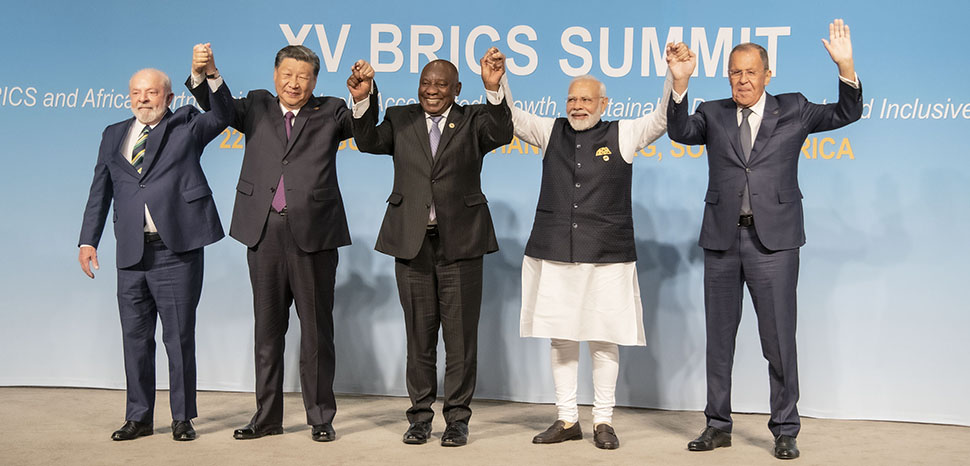Saudi Arabia, a nation known for its strategic geopolitical moves, recently made headlines with a decision that has left many international observers scratching their heads. The Kingdom’s choice to join the BRICS group, comprised of Brazil, Russia, India, China, and South Africa, has raised questions about its implications for Saudi Arabia’s longstanding alliances, particularly with the United States.
A Shift in Alliances?
The BRICS group, initially formed as a coalition of developing nations focusing on economic growth, has over time morphed into a diplomatic entity with an apparent agenda of countering Western influence. This transition has been spearheaded by China and Russia, two nations frequently at odds with U.S. policies. Saudi Arabia’s entry into this bloc, especially at a time when it has been negotiating a peace deal with Israel facilitated by a U.S.-Saudi defense treaty, is perplexing. It signifies a potential shift in the Kingdom’s foreign policy priorities.
This move comes amid ongoing negotiations between Saudi Arabia and Israel, aimed at achieving Middle East stability – a goal crucial for the Kingdom’s modernization and economic development plans. Central to these ambitions is the security assurance from the U.S., similar to the guarantees America extends to allies like Australia and Japan. However, aligning with a group that includes Iran, Russia, and China – nations often seen as adversaries by the U.S. – sends a conflicting signal to American policymakers and lawmakers who play a crucial role in ratifying defense treaties.
Diplomatic and Economic Implications
Saudi Arabia’s decision to join BRICS raises significant diplomatic and economic questions. The bloc’s ambition to establish a global financial system less reliant on the U.S. dollar and more insulated from Western sanctions directly challenges the financial norms that have long underpinned Saudi-U.S. relations. Furthermore, the involvement of Iran, a regional rival, within the same group adds a layer of complexity to Saudi Arabia’s regional security calculus.
From an American perspective, this move could be construed as a divergence from Saudi Arabia’s traditionally close ties with the West. U.S. Senator Lindsey Graham’s comments encapsulate this sentiment, questioning the potential implications of a BRICS-aligned country seeking a closer relationship with the U.S. The concerns extend to the possibility of economic alignments that could put Saudi Arabia in a tricky position regarding U.S. sanctions against Iran.
The Biden Administration’s response, or lack thereof, to Saudi Arabia’s BRICS membership also factors into this geopolitical puzzle. The absence of a clear stance from the U.S. might be interpreted as tacit acceptance or a strategic oversight. Either way, it leaves the door open for speculation about the future of U.S.-Saudi relations.
In conclusion, Saudi Arabia’s decision to join the BRICS bloc represents a significant departure from its traditional diplomatic posture. It introduces new variables into the already complex equations of Middle Eastern politics and U.S.-Saudi relations. While the long-term consequences of this move remain to be seen, it undoubtedly marks a pivotal moment in the Kingdom’s foreign policy, one that could reshape regional dynamics and global economic structures. As the world watches, the question remains: what motivated Saudi Arabia to make this move, and how will this decision mold its future on the global stage?





